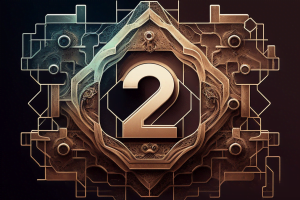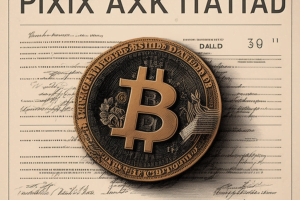As technology continues to evolve, Web3 has emerged as the next frontier of internet innovation. With its decentralized nature and focus on user empowerment, Web3 aims to reshape the way we interact with the digital world. In this article, we will explore the concept of Web3, its history, notable use cases, success stories, and what the future may hold for this new internet paradigm.
What is Web3?
Web3, also known as the decentralized web, is a vision for a new generation of the internet built on blockchain technology and decentralized protocols. Web3 aims to empower users by giving them more control over their data, privacy, and digital assets while reducing the influence of centralized authorities like tech giants and governments.
Brief History of Web3
The journey towards Web3 began with the emergence of Bitcoin in 2009, which introduced the concept of a decentralized, peer-to-peer digital currency. As the blockchain technology behind Bitcoin matured, Ethereum was developed in 2015, enabling the creation of decentralized applications (dApps) and smart contracts. The proliferation of dApps and decentralized finance (DeFi) platforms has set the stage for the development of Web3 as a new internet paradigm.
Notable Use Cases
Some of the most promising use cases of Web3 include:
- Decentralized Finance (DeFi) – Web3 enables the creation of financial products and services that operate without traditional intermediaries like banks, allowing users to access a global financial system with fewer barriers.
- Decentralized Identity – Web3 allows users to create and manage their digital identities, ensuring greater privacy and control over their personal information.
- Decentralized Storage – Services like Filecoin and Storj provide decentralized data storage, ensuring data resilience and reducing reliance on centralized data centers.
- Decentralized Social Networks – Web3-based social platforms like Mastodon and Steemit offer alternatives to traditional social media networks, promoting user ownership of content and data privacy.
- Decentralized Autonomous Organizations (DAOs) – Web3 enables the creation of DAOs, which are organizations run by smart contracts rather than centralized management, allowing for more transparent and democratic decision-making.
Success Cases
Some successful examples of Web3 projects include:
- Uniswap – A decentralized exchange that allows users to trade cryptocurrencies without the need for a central authority.
- MakerDAO – A decentralized credit platform that enables users to borrow and lend cryptocurrencies through smart contracts.
- Brave Browser – A privacy-focused web browser that incorporates blockchain technology to reward users for their attention and enable decentralized advertising.
- IPFS – The InterPlanetary File System is a decentralized protocol for storing and sharing data in a distributed file system, aiming to make the web faster, safer, and more open.
- Aragon – A platform for creating and managing DAOs, enabling decentralized governance and decision-making.
In Conclusion
Web3 presents a new way of thinking about the internet, promoting decentralization, user control, and more equitable distribution of power and resources. As blockchain technology continues to mature, we can expect Web3 to have a significant impact on various industries, from finance to social media. While challenges remain, such as scalability and user adoption, the potential of Web3 to revolutionize the digital landscape is undeniable. As we move forward into the era of the decentralized web, the opportunities for innovation and growth are limitless.























![StarsArena (StarShares): The Universe of Web3 Crypto Social Media! [Guide] starsarena](https://cryptos.us/wp-content/uploads/2023/10/starsarena.png)